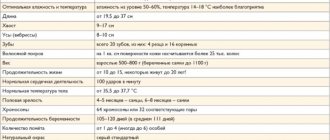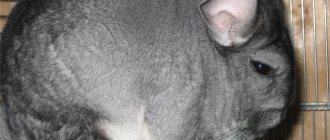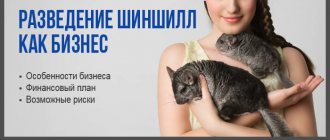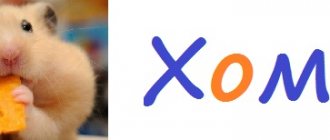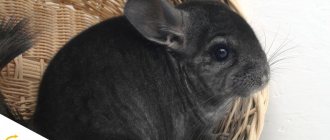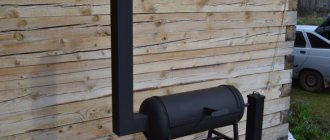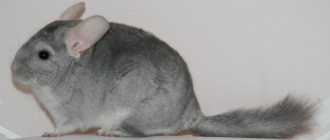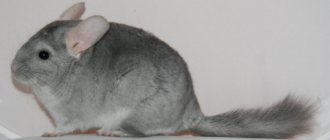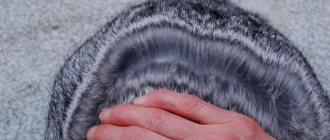- Characteristics of fur
- Advantages of business Conditions of maintenance
- Expenses
- Profit
Breeding chinchillas is a very interesting activity, which, with the right approach, calculation and established sales, can bring considerable profit. After all, animal skins can be sold profitably or you can sew a fur coat, fur collar, or hat yourself. How much time, money and effort needs to be spent in Russia in order for the cultivation of chinchillas to begin to make a profit - this is the subject of today’s conversation. We will also find out how much a chinchilla skin costs in our country and where to contact regarding the sale of goods. But first things first.
Breeding chinchillas in Russia is a very promising business and a very decent business, which can be based on the cultivation and sale of the animals themselves, as well as the sale of skins for fur coats. How much does a breeding animal cost for sale? The price may vary within 100 USD. However, today we will talk about the sale of chinchilla skins, the peculiarities of doing business and risks.
To begin with, all beginners need to draw up a small business plan, which will include basic organizational, legal, and business expenses. It outlines the prospects for doing business and describes the sale of the final product.
Characteristics of fur
In addition to dietary meat, chinchilla is very valuable due to its fluffy skin. They can be used to make fur coats, hats, fur products and much more. This direction, among others, is the most profitable and promising in our country. Fur is valuable due to the presence of a huge number of hairs (on average, there are about 25 thousand hairs per 1 cm square) and incredible beauty and silkiness. However, you can combine several areas of business and simultaneously sell meat, sell skins and sell live animals.
How much does a chinchilla skin cost? This is a very important question for those new to chinchilla breeding. Much in the pricing policy depends on the quality of the skin and the appearance of the product. But on average, the price of the finished product varies from 250 to 300 USD. The cost of top quality skins on the market can increase several times.
Equipment for the life and reproduction of chinchillas
To fully start a business, you need to write down in your business plan a list of equipment that will be needed at first. This is for you:
- 20 cells (cost from 23 thousand rubles);
- feeders of the bunker system (20 will also be enough, the cost starts from 9 thousand);
- 20 drinkers with an automatic mechanism (about 4,500 rubles);
- bathing containers (also 20 pieces - from 9 thousand rubles);
- 2 convectors at a cost of 8 thousand for both;
- air conditioner (from 20 thousand rubles per unit).
The final estimate will be about 300 thousand rubles. Depending on the component manufacturer, you can either significantly reduce the average bill or increase it, thereby raising the future price of finished products.
Advantages of business
- Financial benefit. With a small investment of capital, you receive net income in a short period of time;
- Availability. This type of business can be done by absolutely anyone who has a small premises and a great desire to open their own business from scratch. This does not require special in-depth knowledge, veterinary education, or a lot of money. You need to have desire and strength;
- Simplicity. In fact, it is not very difficult to start breeding chinchillas and organize the work correctly.
It is not difficult to make an approximate calculation of your future business and you do not need financial education for this. The first thing you should pay attention to is that chinchilla breeding can be done in an apartment or private house. The thing is that these animals do not have an unpleasant odor due to the lack of sweat glands. Therefore, you can safely grow them in an apartment without fear that they will emit a bad aroma. In addition, they are very friendly, unlike, for example, muskrats, which constantly bite. Chinchillas are very sweet and kind creatures that can even bite off their claws on their own! Cages for animals are a separate topic, but you can make them yourself, or purchase them in special zoological stores.
Conditions of detention
Chinchillas have some characteristic features on which their breeding depends. This:
- Compliance with the temperature regime, which varies from 15 to 20 degrees. It is very important to prevent a decrease in indicators, as well as an increase of more than 25 degrees. This can lead to the death of the animal. Therefore, if hot days are possible in your climate zone, it is better to immediately equip the room with air conditioning;
- Location. Try not to place cages with chinchillas near a window, because... animals don't like sunlight. Also avoid any players with loud music or other sounds;
- The cages should be roomy, but not high, so that the animal cannot break. There must be at least one square meter of cage area per individual;
- The inside of the cage is lined with sawdust, which needs to be changed at least once a week. In addition, each cage should have a bath with special ash, a feeder and a drinking bowl;
- Animals eat hay, tree branches, grasses, granulated feed, grains, nuts and much more;
- Chinchilla is a nocturnal resident. That's why she feeds at night. Just like it fulfills all other needs, it is worth paying special attention to. And do not place cages near children, and also feed them before nightfall.
Expenses
In order to start a chinchilla business, you need:
- Purchase 3-4 females and one male. It is desirable that these animals come from different families.
- Install cages. About 10-15 animals can freely fit in an area of 2 square meters. To save space, you can install cages on top of each other. You can save on purchasing equipment for keeping chinchillas and do everything yourself. It is not difficult.
- Buy food. Approximately, one healthy individual consumes about 1 kg of granulated feed per month. Here you can also save money and stock up on dry food for the winter. This can be hay, branches of trees and bushes, rose hips, hawthorn, etc.
Profit
Chinchilla breeding as a business
One female per year, on average, can produce about 5-9 puppies. Her childbearing period, with proper feeding and maintenance, can last up to 15 years. Accordingly, a family of 4 females and a male can produce up to 30 young animals per year for fattening. They can be grown for later propagation or left for skinning. A one-room apartment can accommodate about 2-3 families.
As you can see, chinchilla breeding is a very profitable and lucrative business. Keeping animals is not troublesome and simple, they do not cause any harm, do not have an unpleasant odor, do not scream, eat well and reproduce well. In order to start a business, you should not immediately buy 2-3 families and spend a lot of money. We advise you to purchase 2-3 individuals and watch them for a couple of months, get used to their lifestyle, and monitor the reproduction process. And only if you are satisfied with everything and you like the animals, should you start mass breeding.
If you are very interested in this type of activity and you want to expand its scope, then we advise you to open a small farm. What might this require?
Chinchilla cost and choice of individuals
One of the most important factors for the success of a farm is the correctly selected young animals, that is, individuals suitable for reproduction. Male chinchillas are usually quite expensive, but retain their reproductive functions for 18 years.
Chinchilla coloring has 12 main types. You can choose any of them. The most expensive is the standard, non-mutated color, and black corduroy is a particularly popular high-quality fur among manufacturers.
If you do not want to make a mistake with the choice of animals, it makes sense to contact business owners (that is, factories) that keep more than five hundred chinchillas. Data in the number of individuals are indicated on the official website of any plant of this type (in the declaration or other documents).
How much does a chinchilla cost? The cost of the animal varies depending on its color and age. One individual can cost you either a thousand rubles or 3,000 - 4,000 rubles. Choose the factory where you will purchase animals based on reviews from other suppliers and the number of animals.
Mini farm: what do you need?
First of all, this is the room. Its size should be proportional to the number of animals that you are going to breed there. Ensure that the room is always dry and clean. For hot days it is better to install air conditioning.
Secondly, you will need to legalize your activities. To do this, you will need to open a business and pay taxes to the treasury every month.
Thirdly, it will require spending some amount on purchasing breeding animals for breeding and food.
And fourth, is the staff. To begin with, you may need just one assistant who will monitor the behavior of the animals, clean their cages, feed them, etc.
Preparing a fur auction
Preparations for each auction begin 1-2 months before its start. Suppliers of chinchilla skins deliver their goods to auction warehouses. The fur must be checked to see if it meets the generally accepted standard. Specialists working in the auction company sort the incoming fur, after which the fur pelts are divided into lots, which consist of skins of the same quality and color. From each such large lot, one sample is taken for demonstration (show lot). At the same time, an auction catalog is being prepared containing a list of all lots available at the auction.
A few days before the start of the auction, all potential buyers can take advantage of the opportunity to inspect the sellers' lots. Inspection of the goods is a mandatory procedure for all existing fur auctions , therefore, according to the terms of the auction, all claims received from buyers in the event of detection of any fur defects after purchasing the skins (except for hidden ones) will not be accepted after the end of the auction.
The auction itself opens on the appointed day and at the appointed time in a hall specially designed for this purpose. The auction presidium (auctioneer and his assistants) is located on a raised platform at the table facing the buyers. The task of the presidium is to monitor the behavior of buyers who take part in the auction.
Implementation issues
Now you have already equipped a large room with cages, purchased animals, mated, and received the first young animals, which have grown to one year old. What's next? Where can I sell the product?
Here is a list of possible buyers:
- Farmers at the fur market. These can be experienced business owners, novice buyers, as well as those involved in the resale of goods, intermediaries. It won't be difficult to find them. You will need to carry out advertising work, display samples of your products on various thematic sites and portals. As we have already said, you can sell live animals, skins, meat;
- All kinds of pet stores, zoos, exhibition centers, nurseries that need a live animal;
- Ordinary residents of cities and villages who buy animals for their homes;
- Fur factories;
- All kinds of catering establishments for selling meat (restaurants, cafes, canteens, etc.).
As you can see, chinchilla breeding is a very hassle-free and promising business if everything is calculated correctly. Do what you love and expand your production scale.
Special qualities
Chinchillas are used to make outerwear for going to the theater and restaurant. Rodent skins are light and warm. This type of fur is considered especially valuable. Chinchilla fur color is tricolor:
- white belly;
- gray sides;
- ash-smoky back.
The mesdra is elastic and stretches easily. Each guard hair also has three colors. The quality of the skin is determined by:
- pile density;
- absence of strong chemical odors;
- characteristic color.
High-quality quickly restores the original volume after compression. There are no pellets, bald spots, or spots of a different shade on the pile. Under the cover of hairs and down, the skin is not visible.
Kinds
In Russia, fur-bearing animals are raised under artificial conditions. Here the animals receive proper nutrition and are kept in rooms with the required temperature conditions. As a result, chinchillas raised in fur farms develop dense, shiny hair.
The site sells farm-produced skins. The small long-tailed chinchilla is bred. Hunting of the wild short-tailed rodent is prohibited. The lint on the animal’s skin is restored easily and quickly after squeezing or pressing with your fingers. Skins with contrasting black, gray and white colors are prized. Bleached skins acquire a chocolate hue on the back and snow-white on the belly.
Raw materials are expensive, so they are rarely painted. Rare valuable fur is valued for its natural color and pile density.
